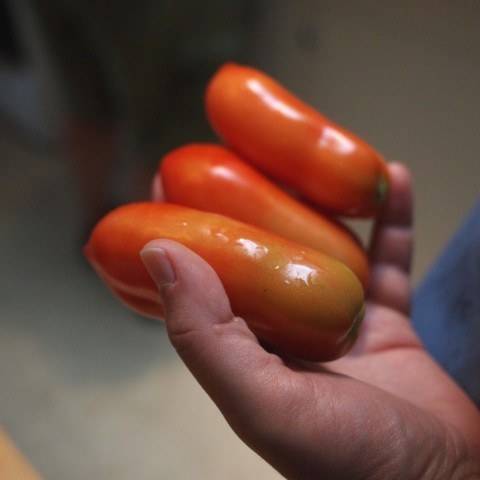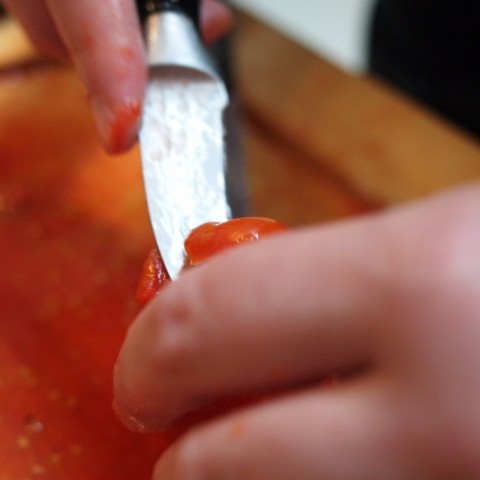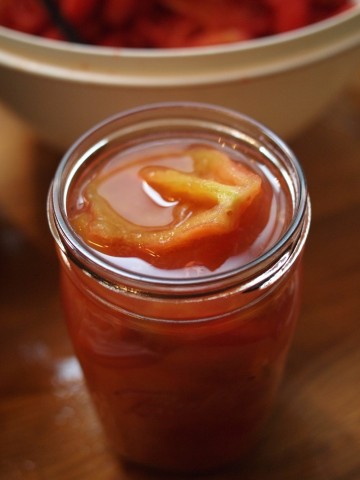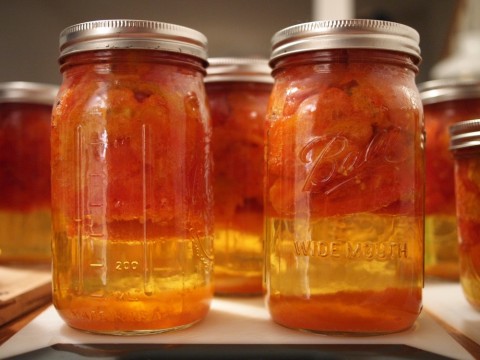My friend Linda is a canning prodigy. For a couple of seasons now, she has looked out into her vegetable garden, and into the ripening stocks of our local farmer’s markets, and asked: how can we make all this last through the winter?
From peaches and strawberries and apples, she has made jams, preserves, and butters enough to eat, and to give away. She has canned whole tomatoes, halved tomatoes, and cherry tomatoes, all to good effect. And this year, she convinced me that I needed to do it too.
Now I’m not really a pro at this sort of food prep. I made a balsamic fig jam once, and canned it — with Linda’s help. Although I know it’s my own prejudice, to me canning smacks of industry, of great loud machines, of armies on the march, and (oddly enough) of Napoleon’s Russian campaign. But Linda, of course, is right. In order to eat seasonably and sustainably over the winter, canned food is key. And no canned food is healthier — for us or for the environment — than food we can ourselves.
So Sarah, with her indomitable green thumb (pictured below), grew me a giant load of San Marzano tomatoes. And Linda, who had her own giant load of tomatoes to can anyway, offered me the use of her stove and her canning equipment, and promised to hold my hand through the process.
There is nothing particularly difficult about it. Canning, in a nutshell, involves stuffing fruit into a mason jar, shutting the lid, and then boiling it until all the molds, parasites, and bacteria that make food spoil (and make you horribly, disfiguringly ill) have been killed. The trick, and the most tedious part, is good food prep — getting the food into the shape you want, and following the USDA’s recommendations fastidiously so that you can be as sure as possible that the preservation process has worked.
Linda and I used different methods that reflect our own preferences (and my inexperience at doing this). She blanched and shocked her tomatoes in order to get the skins off, then cored them, halved them, and left the seeds intact. I froze and defrosted mine to loosen the skin, I slit them down the middle to remove the seeds, and I tried, as much as possible, to leave the tomatoes whole. Her method is better for the most part. Her prepared tomatoes were much prettier, and none of them had turned to a pulpy mush as a result of burst cell walls. But our goals were the same — to separate the parts of the tomato we wanted to eat from the parts we wanted to discard, and to can only the former.
Compared to the prep, canning itself is a piece of cake. Linda got two giant pots of water boiling on the stove, and we loaded clean jars with tomatoes, lemon juice, and salt (in USDA-recommended proportions). We closed each lid, and into the water bath they went, to be boiled for at least eighty-five minutes.
We ended up processing thirteen quarts and one pint of San Marzanos, all told, and we did it all in just over four hours (including prep and clean-up). The finished jars, just out of their water bath, looked kind of gross — like blood cells separated from plasma. But I am assured that that is just a temporary condition. After cooling, they will be shaken up a little bit. And they will take on the appearance of something you might, ultimately, want to make into sauce for pasta.
As admirable as I find Linda’s devotion to the method, I think that I am not a convert. There will be no great quantities of jam for me. No investment in equipment so that I can can green beans, or okra, or make jalapeno relish. But that is not to say that I will never can again. I fully intend to take advantage of Linda’s expertise again next year to preserve another boatload of tomatoes for the winter. And I have some ideas, I think, for some canned treats to give away for the winter holidays.
Heirloom ketchup, anybody? More fig jam? Maybe even kimchi?
The possibilities are very compelling.
For more information on canning, I would recommend having a look at the classics: the Ball Complete Book of Home Preserving, and maybe The Big Book of Preserving the Harvest by Carol Costenbader.



